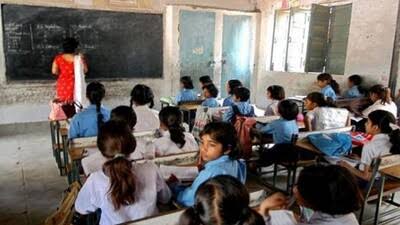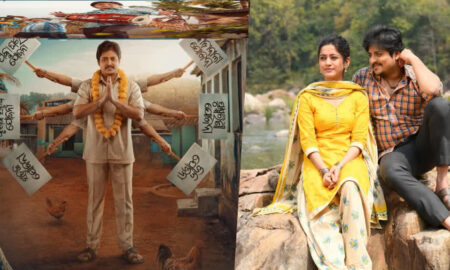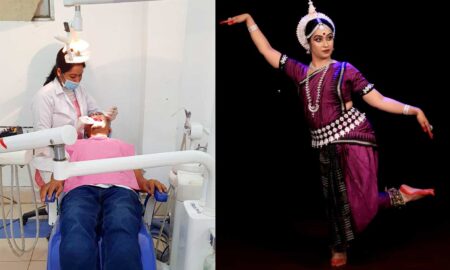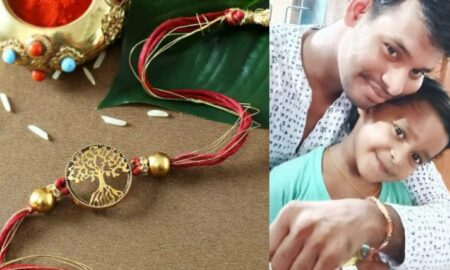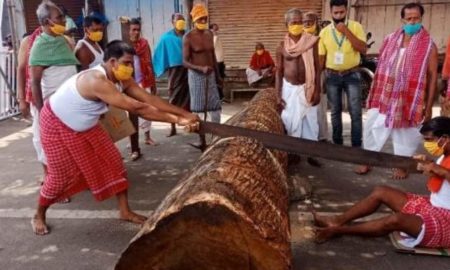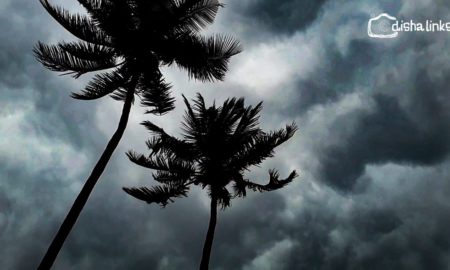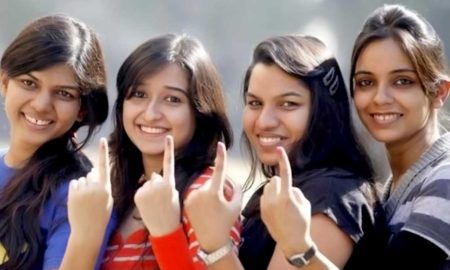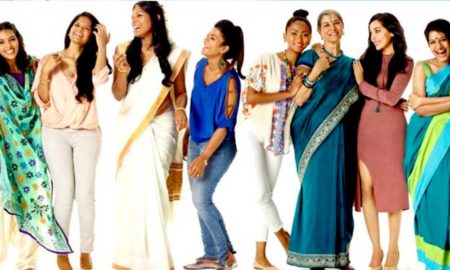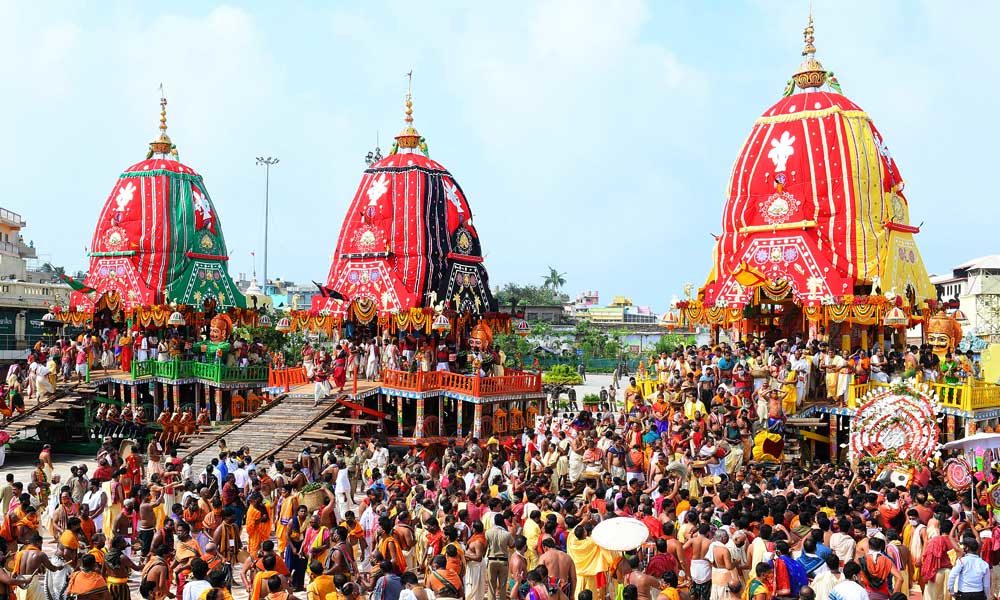

“Thousands gathered in Puri, pulling majestic chariots and chanting ancient hymns, as the Rathayatra festival brought vibrant faith and unity to life.”
Bhubaneswar, Odisha – July 7, 2024: Thousands of devotees converged in Puri to celebrate the annual Rathayatra festival, also known as the Festival of Chariots. This grand event, held in the sacred city of Puri, Odisha, marks the holy journey of Lord Jagannath, along with his siblings Lord Balabhadra and Devi Subhadra, from the Jagannath Temple to the Gundicha Temple, located approximately 3 kilometers away. The festival, held on July 7, 2024, drew pilgrims from across India and around the globe.
The Rathayatra honors the journey of the deities, symbolizing a pilgrimage that unites people from diverse backgrounds in a display of unity and devotion. The festivities commenced with the traditional “Chhera Pahara” ritual, where the Gajapati King of Puri ceremoniously swept the chariots, symbolizing humility and equality in the presence of the divine. Devotees actively participated by pulling the large, beautifully adorned chariots of Lord Jagannath, Lord Balabhadra, and Devi Subhadra, while chanting hymns and singing devotional songs. The colorful and lively celebration vividly underscored the profound spiritual significance and rich cultural heritage of Odisha, making Rathayatra a festival of profound religious and cultural importance.
The festival’s main highlight is the procession of intricately crafted chariots—Nandighosha for Lord Jagannath, Taladhwaja for Lord Balabhadra, and Darpadalana for Devi Subhadra. Each chariot is meticulously constructed with specific types of wood and adorned with vibrant canopies in colors symbolically associated with the respective deities. Nandighosha, towering at 44 feet 2 inches with 16 wheels and 832 wooden pieces, represents Lord Jagannath, accompanied by white horses and guarded by Garuda. Taladhwaja, standing at 43 feet 3 inches with 14 wheels and 763 wooden pieces, symbolizes Lord Balabhadra, with black horses and guarded by Vasudeva. Darpadalana, at 42 feet 3 inches with 12 wheels and 593 wooden pieces, signifies Devi Subhadra, drawn by red horses and guarded by Jayadurga. These chariots, drawn by devotees, symbolize the divine journey from the Jagannath Temple to the Gundicha Temple, about 3 kilometers away.
Rathayatra, originating in Puri, Odisha, has transcended its regional origins to become a globally celebrated festival. In addition to its deep roots in India, Rathayatra is enthusiastically observed in various international cities with significant Hindu communities. Cities like London, New York, Toronto, and Sydney host annual Rathayatra celebrations, which feature chariot processions, cultural performances, and traditional rituals akin to those in Puri.
The festival’s appeal lies in its vibrant display of spiritual devotion and cultural heritage. Foreign countries have embraced Rathayatra as a symbol of cultural exchange and spiritual unity, attracting both Hindu diaspora communities and curious participants from diverse backgrounds. This global phenomenon not only preserves and promotes Hindu traditions but also fosters intercultural dialogue and mutual respect across continents. Rathayatra’s international presence continues to grow, showcasing the enduring relevance of its traditions and values in a globalized world.
The International Society for Krishna Consciousness (ISKCON), through the efforts of A. C. Bhaktivedanta Swami Prabhupada, has played a pivotal role in popularizing Rathayatra globally since 1968. Today, the festival is celebrated annually in over 108 cities worldwide, including Moscow, New York, London, Sydney, and many others, attracting millions of participants and spectators each year.
During Rathayatra, performances like Gotipua and Odissi add a profound spiritual dimension to the procession. Dancers, with gestures of reverence and devotion, pay homage to Lord Jagannath during the ceremonial procession from the temple to the chariot. This devotional dance serves as a heartfelt welcome to the Supreme Lord, who embarks on his annual journey amidst the devotees.
The cultural offerings, including dance rituals and musical tributes, continue to enhance the spiritual experience for all participants. Artists and devotees alike find rejuvenation in their expressions of devotion, embodying a deep sense of spiritual surrender to their beloved Lord Jagannath. Rathayatra remains a rare occasion where Jagannath, along with Balabhadra and Subhadra, interacts directly with the public, resonating with the spiritual sentiment expressed in the hymn “Jagannatha Swami Nayana Pathagami Bhaba Tume” (May the Lord of the Universe be the Object of my Vision).
Rathayatra, the Festival of Chariots, transcends geographical boundaries to embody a global celebration of spirituality, cultural heritage, and unity. Originating in the ancient city of Puri, this festival has evolved into a vibrant symbol of cultural exchange and spiritual devotion, resonating with millions around the world. As devotees pull the majestic chariots of Lord Jagannath, Lord Balabhadra, and Devi Subhadra, chanting ancient hymns and performing traditional dances, Rathayatra continues to foster mutual respect and understanding across diverse communities. This annual journey of faith underscores the enduring relevance of Rathayatra’s traditions in a modern, interconnected world.

Suchismita Panda
Student of journalism and mass communication, Rama Devi Women’s University Bhubaneswar



